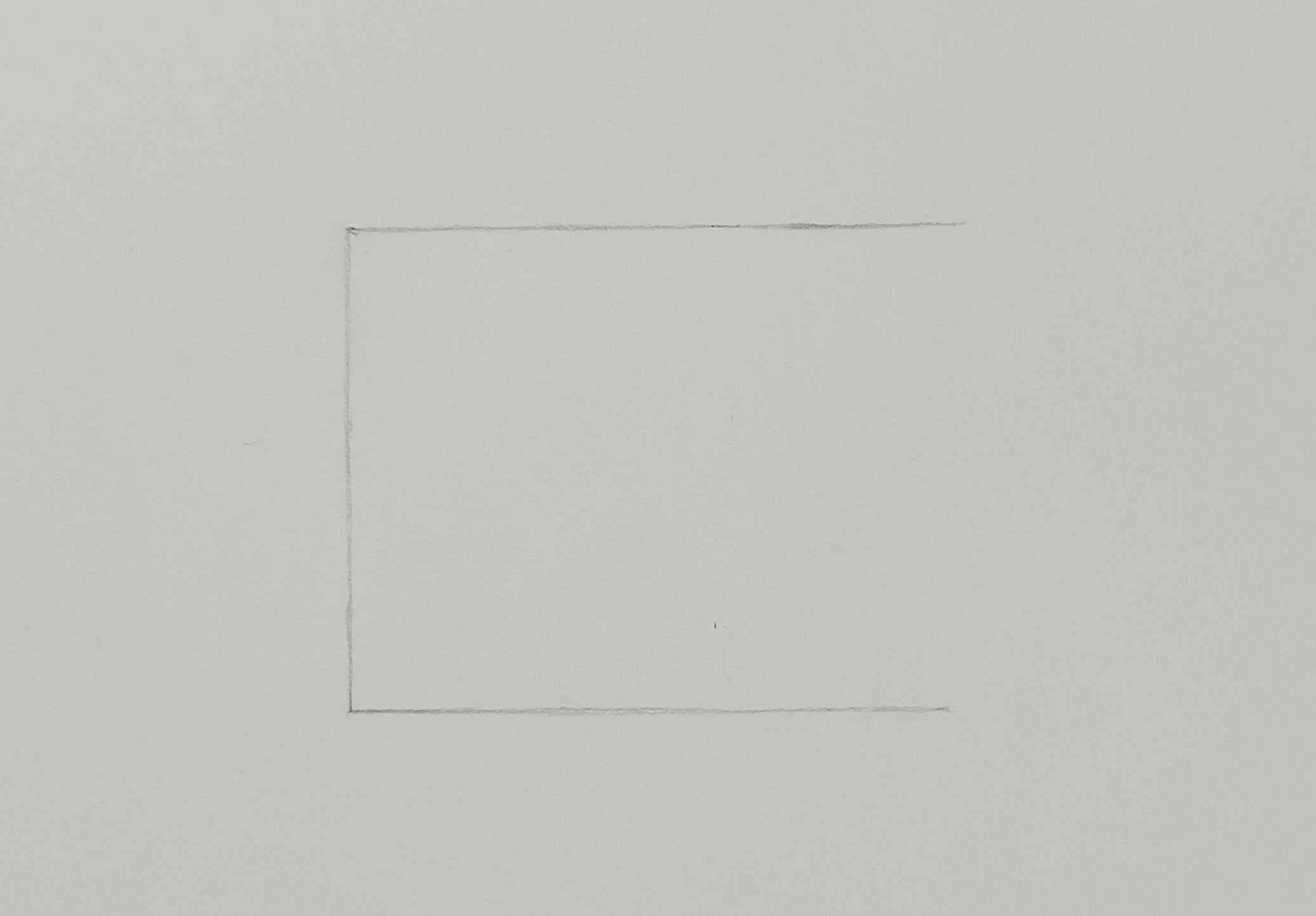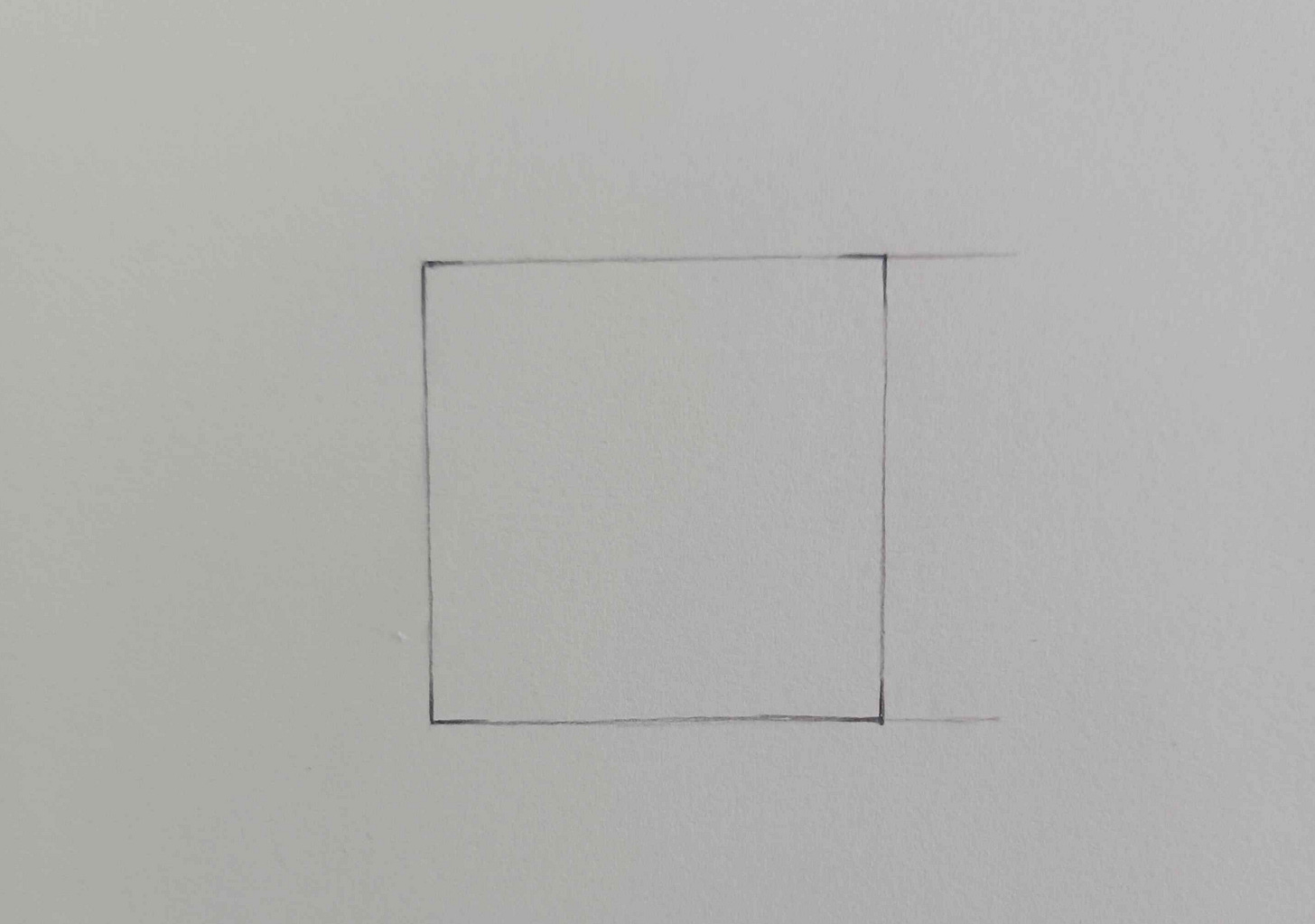What We’ve Learned So Far
In Lesson 1 we stripped drawing down to its utmost simplicity.
how to properly sharpen a pencil with a razor and how to finish the point with sandpaper.
how to measure — without a ruler — using only a pencil.
the line was introduced as the simplest and most powerful unit in drawing and then we learned how to divide it into halves, quarters, thirds and fifths.
Now, we will take the next logical step: constructing a square — aka a plane.
Why the Square Matters
The square is one of the most important geometric forms in drawing.
Learn to draw a square — and in future lessons, a square in perspective — and you will gain a visual grid, a way to “think” spatially on the page.
— which will unlock you ability to draw in 3-D (in perspective).
But drawing a true square freehand is more difficult than it sounds.
This lesson will teach you how to:
Construct an accurate freehand square
How to section a square
How to duplicate the square and its sections
Part 1: Constructing the Square
Geometrically, a plane is:
“a flat, two-dimensional surface that extends infinitely in all directions.”
-Euclid, Elements
A square, essentially, is a section of a plane in which its length and width are equal and its 4 interior angles are all at 90°s to one another.
Remember, NO STRAIGHTEDGES!!!
Step 1: Draw Your Base Line
With your pencil draw a vertical line (the bigger the better)
From the top and bottom of that line draw draw two horizontal lines parallel with each other.
Step 2: Find the Horizontal Length
Using the measurement technique in Lesson 1, measure the length of the vertical line and then mark it on one (or both) of the horizontal lines.
Then, draw a vertical line from that measurement to complete the square
You now have a square.
— it should be noted that some of the lines may appear curved or not perfectly in proportion (as in the picture below).
This is due to the photo distortion of my phone’s camera — I can assure you they are straight.
The square is the basic form — like a block of marble.
From it we can sculpt out circles, triangles, pentagons and hexagons.
We will master these basic shapes — which won’t take long — and will then learn how to draw all of these forms in perspective.
From there, we will learn to draw the 3 dimensional version of a square — the cube.
But first, we need to learn how to section and duplicate the square in Part 2 and 3 of this lesson …
Before we begin, a special thanks to subscribers who pay for the publication, or expense it as an educational resource or a write off on their taxes. By upgrading your subscription, you’ll gain access to this full lesson — plus every future drawing lesson and 100% free access to all digital products in the shop.





